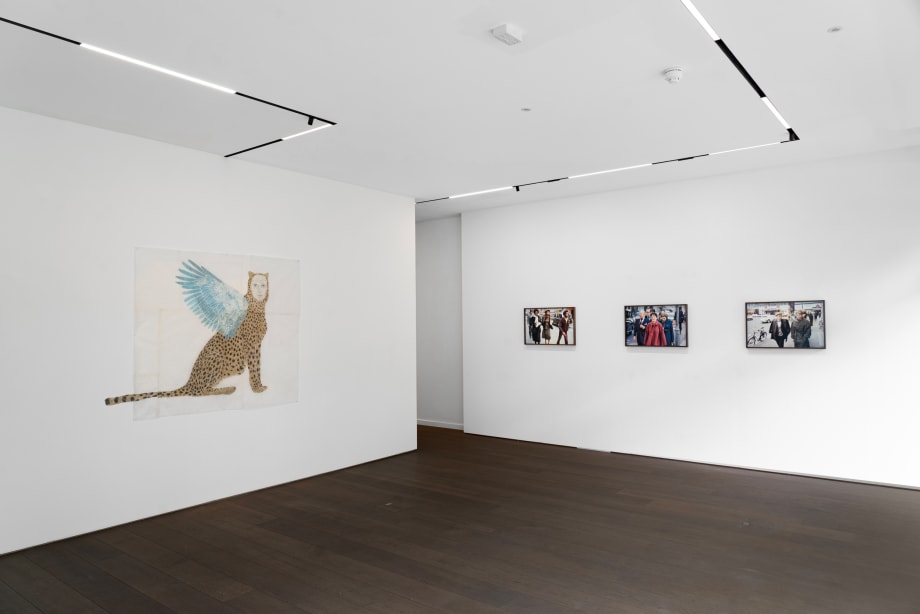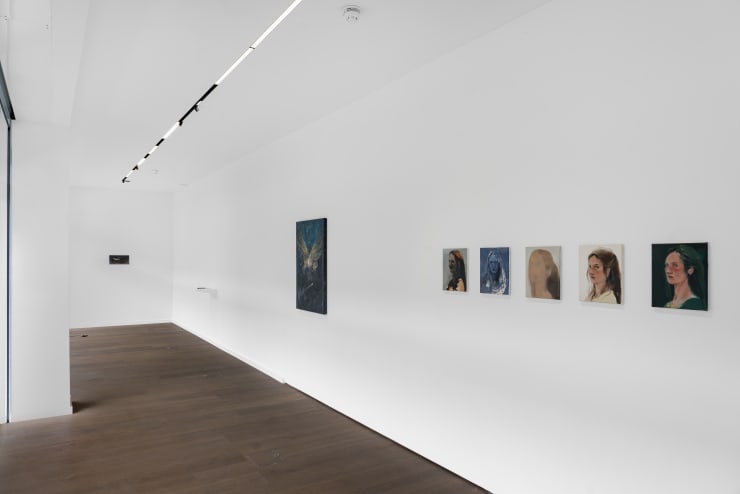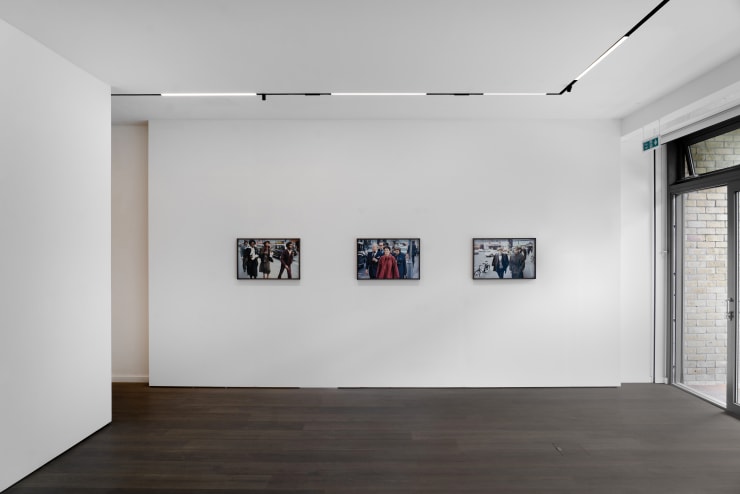Viaggi / Journeys
Past exhibition
Overview
Ayla Dmyterko, Claudia Di Francesco, Sunil Gupta, Invernomuto, Luca De Leva, Marta Mancini, Nazzarena Poli Maramotti, Marta Roberti, Markus Saile, Michele Tocca, Francisca Valador, Cesare Viel
Private view: Thursday, 10 July 2025, 6 – 8 PM
Performance: Thursday, 10 July, 7 – 7.15 pm. Luca de Leva will join virtually to introduce Thyself Agency
"The relationship between exploration and enquiry or, more simply, between walking and reflection, has a lineage that dates back to the school of philosophy founded by Aristotle in ancient Greece, whose teachings were rooted in empirical observation and knowledge drawn from experience. [...] While it is said that the Aristotelian school was named after the peripatoi (colonnades) of the Lyceum, it is also claimed that it was because of Aristotle's habit of walking while lecturing. This school, therefore, made an explicit connection between thinking and walking [...]."
–Tanya Barson, The Peripatetic School, 2011
Alma Pearl is pleased to host Viaggi / Journeys, a joint exhibition in London with the following Italian galleries: A+B Gallery (Brescia), Matèria, (Rome), Pinksummer, (Genoa), and z2o Sara Zanin (Rome).
There is an element of chance in the construction of this exhibition, in the sense that each gallery decided which works to include without really knowing whether there was even any common ground to bind works together. Still, we wanted to do something chorally – and, in doing so, we found unexpected resonances. As I write this text, I am thinking about this process as a journey–of artworks, of people, of networks spreading over the years suddenly all coming together. Movement, whether literal or metaphorical, feels an important aspect of this experience.
There is of course the relational aspect of this project to consider, an idea of a support structure spreading its wings far and wide but also looking backwards as well as forwards. ‘Viaggi’–and its English translation, ‘journeys’–is a lulling back and forth between two very different sounds. The first thrives on the vocals yet doubles on the ‘g’ lingering like footsteps echoing in old piazzas. Journeys feel more like a stream, or a calming flow of thoughts and experiences, more internal than external. Such is at times the experience of the traveller, alone or in a group–yet always transformed by the encounter with the other.
The metaphor of the lone walker is integral to the drawings of Cesar Viel. His series Alberi (Trees) stems from walking through places, through woods—in some way, it originates from a performative practice. It began in 2020–21, in relation to the Covid pandemic and to the sense of confinement, which gave rise to the importance of reestablishing a connection with the wild.
Rewind back: the walkers in Sunil Gupta’s London 1982 series move and exist together within a shared urban environment yet marked by individual differences. The artist’s diasporic experience of multiple cultures here informs a practice dedicated to themes of race, migration, and queer identity, with his camera capturing individuals inhabiting the public space. Initially developed to focus on an exclusively gay subject, Gupta soon realised that the streets of London were “mixed and harder to navigate, as they were less defined than the ones in New York. [...] I started concentrating on whatever caught my eye—migrants, people of colour, gay men, elderly people out and about on their own.”
There are journeys that were meant to happen but couldn’t take place. Luca De Leva, unable to attend due to an expired passport, turns his absence into a conceptual gesture through the formalising display of his travel documents, here a key element of Thyself Agency, his installation as a travel agency where people are meant to exchange lives.
Elsewhere, the journey turns inward—becoming a vehicle for introspection, childhood memories, myth, and dream. This is echoed in Claudia Di Francesco’s Il sogno della quattro di mattina (The 4am Dream), a dreamlike meditation on early-morning reverie; in Marta Roberti’s evocation of mythological creatures and the continuous repetition of the self-portrait, in search of the adjacent possible through the works of Nazzarena Poli Maramotti. Ayla Dmyterko, a third generation Ukrainian, who grew up in the large diaspora community in Saskatchewan, Canada, often explores her heritage as a displaced, but now rooted community. In Halcyon High, the artist evokes vernacular folklore and knowledge. In Twisted Goops, the artist duo Invernomuto reflects on childhood memories rooted in Vernasca, a town in northern Italy. The work evokes the popular toys gifted to children during the 1980s, especially around Saint Lucia’s feast day on December 13th, a celebration comprising both religious and vernacular traditions.
For others, the journey takes a more formal turn: a deep dive into abstraction for example in the work of Markus Saile, based on a "deconstruction of the material’s expressive potential”; a circular one for Marta Mancini, where she develops a dialectical relationship with earlier works, revising their structure and palette. Add to this, a back-and-forth between real and painted worlds for Michele Tocca and Francisca Valador. This is a fitting point to end our peripatetic travels, I feel—with Tocca’s depiction of old, worn shoes. While figures are notably absent from Tocca’s paintings, the human presence is felt and imagined through what remains. We can only begin to wonder about the paths that have been walked on, perhaps still bearing the faint traces of footprints left behind.
Text written by Celeste Baracchi
Installation Views








